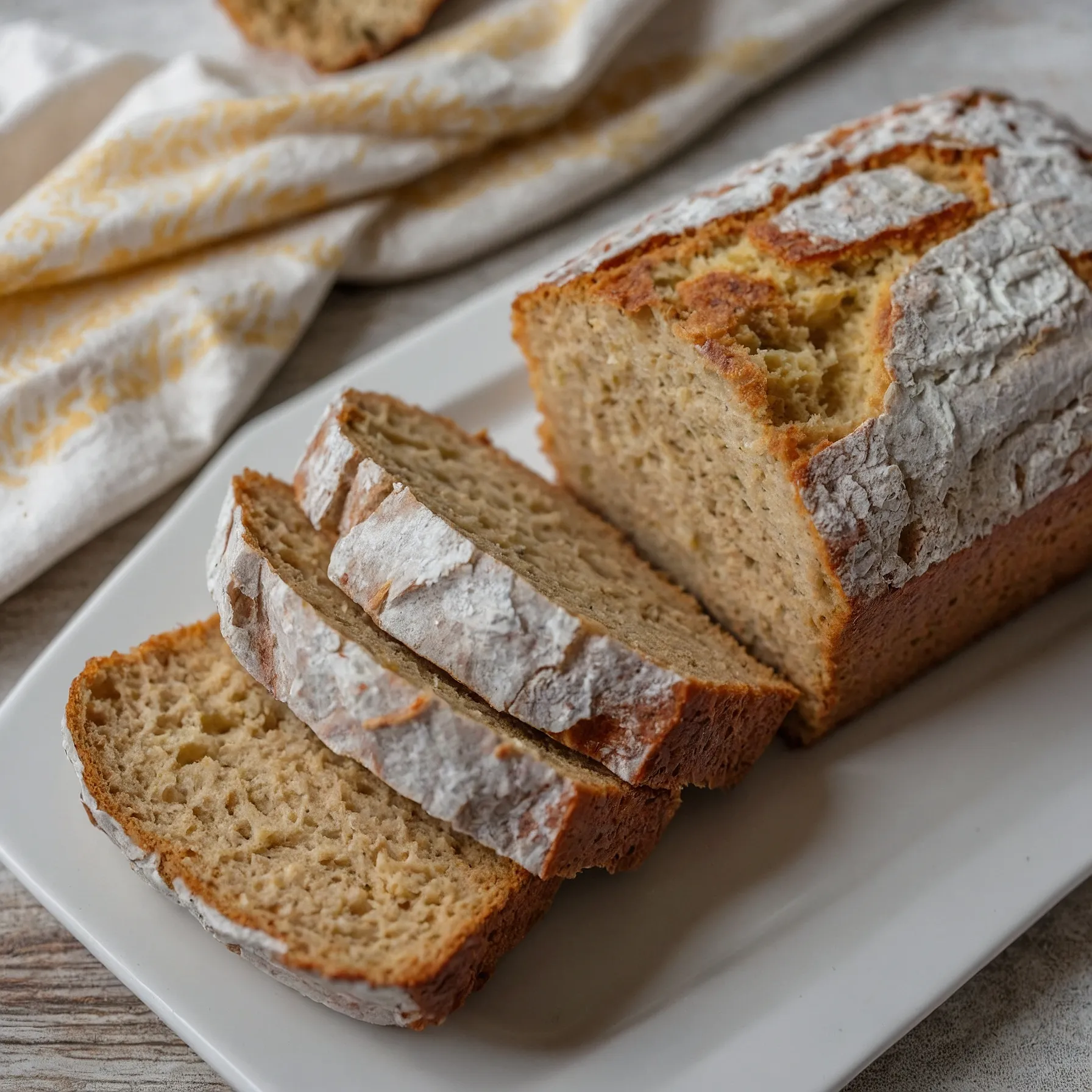Delicious Low Carb Breads – Easy Recipes for Healthy Eating
Discover delicious low carb breads that fit your healthy lifestyle. Learn simple recipes using almond flour, coconut flour, and other keto-friendly ingredients to make perfect loaves at home
Are you craving that warm, comforting slice of bread while trying to maintain a low carb lifestyle? You’re not alone. The quest for delicious low carb bread alternatives has become increasingly popular as more people discover the benefits of reducing carbohydrate intake. In this comprehensive guide, we’ll explore everything you need to know about low carb breads, from what they are and why they’re beneficial to the best ingredients, baking techniques, and troubleshooting tips.
content overview
Table of Contents
What is Low Carb Bread?
Low carb bread is exactly what it sounds like—bread that contains significantly fewer carbohydrates than traditional wheat-based breads. While conventional bread typically contains 15-20 grams of carbs per slice, low carb breads can contain as little as 1-5 grams of net carbs per serving.
The magic behind low carb bread lies in its alternative ingredients. Instead of using wheat flour, which is high in carbohydrates, low carb breads substitute ingredients like almond flour, coconut flour, flaxseed meal, and various protein powders. These alternatives provide structure and texture while keeping the carbohydrate content minimal.
Low carb breads can take many forms—sandwich bread, dinner rolls, bagels, flatbreads, and more. The versatility of low carb baking means you don’t have to give up your favorite bread-based meals while following a low carb eating plan.
Discover more breads Recipes
Why Choose Low Carb Bread? The Benefits
Switching to low carb bread offers numerous advantages beyond simply reducing your carbohydrate intake. Here are some compelling reasons to make the switch:
Blood Sugar Management
Traditional breads cause rapid spikes in blood sugar due to their high carbohydrate content and glycemic index. Low carb breads, however, have minimal impact on blood glucose levels, making them ideal for people with diabetes or insulin resistance. The fiber content in many low carb bread recipes also helps slow down digestion, further preventing dramatic blood sugar fluctuations.
Weight Management
Reducing carbohydrate intake can be effective for weight loss and maintenance. Low carb breads can help satisfy your cravings for bread-based foods without derailing your weight management goals. The higher protein and fat content in these breads also helps increase satiety, keeping you fuller for longer and potentially reducing overall calorie intake.
Improved Digestive Health
Many people find that reducing wheat and gluten in their diet improves digestive symptoms. Low carb breads often eliminate wheat entirely, replacing it with alternatives that can be gentler on the digestive system. Additionally, many low carb bread recipes incorporate ingredients high in fiber, which supports overall gut health.
Enhanced Nutritional Profile
Low carb breads often contain more protein, healthy fats, and fiber than their traditional counterparts. Ingredients like almond flour provide vitamin E and magnesium, while flaxseed adds omega-3 fatty acids. This improved nutritional profile means you’re getting more nutrients per calorie compared to traditional bread.
Reduced Inflammation
Some studies suggest that reducing carbohydrate intake, particularly from refined sources like white bread, may help reduce inflammation in the body. For individuals with inflammatory conditions, switching to low carb bread could be part of a broader anti-inflammatory eating approach.
Versatility for Special Diets
Low carb breads are naturally compatible with many special diets, including ketogenic, paleo, and gluten-free eating plans. This versatility makes them accessible to a wide range of dietary preferences and requirements.
Key Ingredients in Low Carb Bread
The foundation of any successful low carb bread recipe lies in its ingredients. Understanding the function and properties of these alternatives to wheat flour will help you create delicious, satisfying low carb breads.
Almond Flour
Characteristics: Almond flour is made from blanched almonds that have been ground into a fine powder. It has a mild, slightly sweet flavor and a texture that works well in breads.
Nutritional Profile: Rich in protein, healthy fats, vitamin E, and magnesium. Approximately 3g net carbs per 1/4 cup.
Best Uses: Sandwich bread, dinner rolls, and heartier breads. It creates a moist, tender crumb.
Tips: For the best texture, look for finely ground “blanched” almond flour rather than almond meal, which includes the skins and has a coarser texture.
Coconut Flour
Characteristics: Made from dried, ground coconut meat after most of the fat has been removed. It’s exceptionally absorbent, requiring more liquid and eggs than other flours.
Nutritional Profile: High in fiber, moderate protein, and contains beneficial medium-chain triglycerides (MCTs). About 4g net carbs per 1/4 cup.
Best Uses: Lighter breads and sweet bread variations. Creates a soft, cake-like texture.
Tips: Start with established recipes as coconut flour behaves very differently from other flours. Typically, you’ll use about 1/4 the amount of coconut flour compared to almond flour.
Flaxseed Meal
Characteristics: Ground flaxseeds create a meal with binding properties similar to eggs, making it useful in vegan recipes.
Nutritional Profile: Exceptionally high in omega-3 fatty acids and fiber. Contains lignans, which have antioxidant properties. Less than 1g net carbs per 2 tablespoons.
Best Uses: Often used in combination with other low carb flours to add structure and a slightly nutty flavor.
Tips: Grind your own flaxseeds for maximum freshness, or store pre-ground flaxseed meal in the refrigerator to prevent rancidity.
Psyllium Husk
Characteristics: A form of soluble fiber derived from the Plantago ovata plant’s seed husks. It absorbs water and becomes gel-like, providing structure to low carb breads.
Nutritional Profile: Almost entirely fiber with minimal net carbs.
Best Uses: Creates the chewy texture in low carb bread that most closely mimics traditional wheat bread.
Tips: Use whole psyllium husks rather than powdered for the best texture. Start with small amounts, as too much can make bread gummy.
Vital Wheat Gluten
Characteristics: The protein component of wheat, isolated from the starch. While not completely carb-free, it’s much lower in carbs than wheat flour.
Nutritional Profile: Primarily protein with minimal carbs.
Best Uses: Adding elasticity and structure to breads, especially helpful when using nut flours which lack the stretchy properties of wheat.
Tips: Not suitable for those with gluten sensitivities or celiac disease, but can be a game-changer for others seeking better bread texture.
Protein Powders
Characteristics: Various protein isolates like whey, egg white, or collagen protein can add structure to low carb breads.
Nutritional Profile: Primarily protein with minimal carbs, though exact profiles vary by type.
Best Uses: Adding structure and improving the nutritional profile of bread.
Tips: Unflavored versions work best for bread recipes. Different types of protein powder affect texture differently, so some experimentation may be necessary.
Eggs
While not a flour substitute, eggs play a crucial role in most low carb bread recipes. They provide structure, moisture, and binding properties that are especially important when using non-wheat flours that lack gluten.
Ingredients to Avoid in Low Carb Bread
When making or purchasing low carb bread, be aware of these high-carb ingredients that can sabotage your low carb goals:
Wheat Flour and Other Grain Flours
All traditional wheat flours—including white, whole wheat, and bread flour—are high in carbohydrates and should be avoided in truly low carb breads. Other grain flours like rice, corn, or oat flour are similarly high in carbs.
Starches
Corn starch, potato starch, tapioca starch, and arrowroot are often used in gluten-free baking but are very high in carbohydrates.
Added Sugars
Watch out for honey, maple syrup, agave nectar, coconut sugar, and other natural sweeteners, which all contribute significant carbs.
High-Carb “Fiber” Additives
Some commercial products add inulin or resistant dextrin and claim them as “fiber” to reduce the net carb count, but these can still impact blood sugar in some individuals.
Hidden Carbs in Commercial Products
Be wary of commercial “low carb” bread products that use creative labeling. Some products exclude certain carbohydrates from their net carb calculations based on questionable scientific premises.
Different Types of Low Carb Bread
Low carb bread comes in many varieties to suit different preferences and occasions:
Sandwich Bread
The most versatile type is designed to withstand fillings and have a neutral flavor. It is usually made with a combination of almond flour and flaxseed or psyllium for structure.

Dinner Rolls
Smaller, individual portions perfect for accompanying meals. Often, a lighter, fluffier texture is achieved through proper leavening and protein structure.
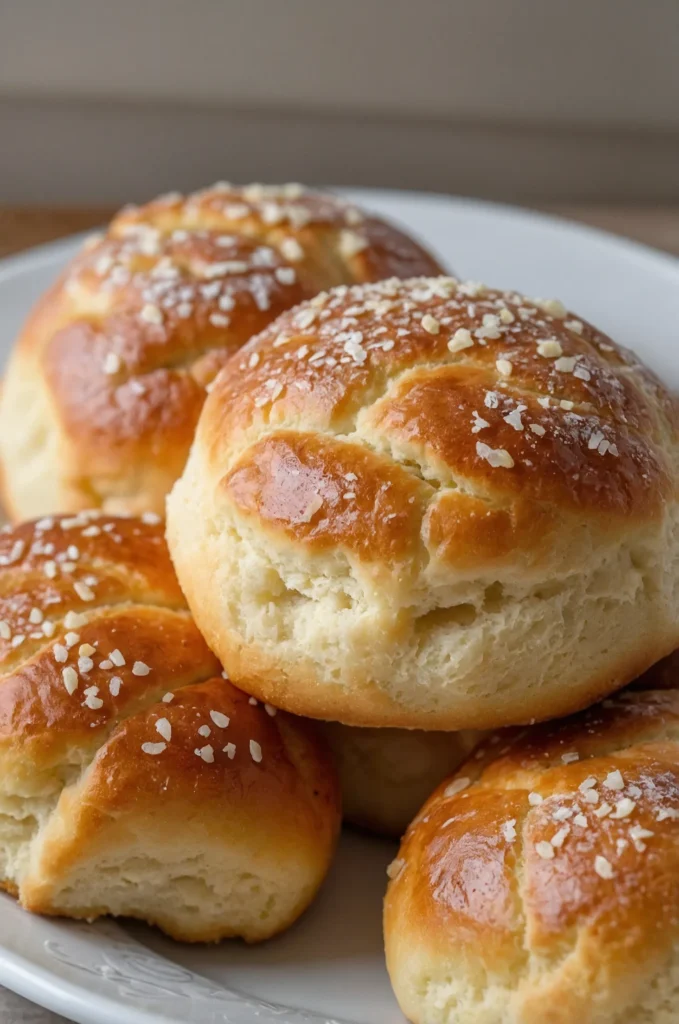
Flatbreads and Wraps
Flexible, soft breads designed for folding around fillings. These typically use psyllium husk and almond flour for pliability.
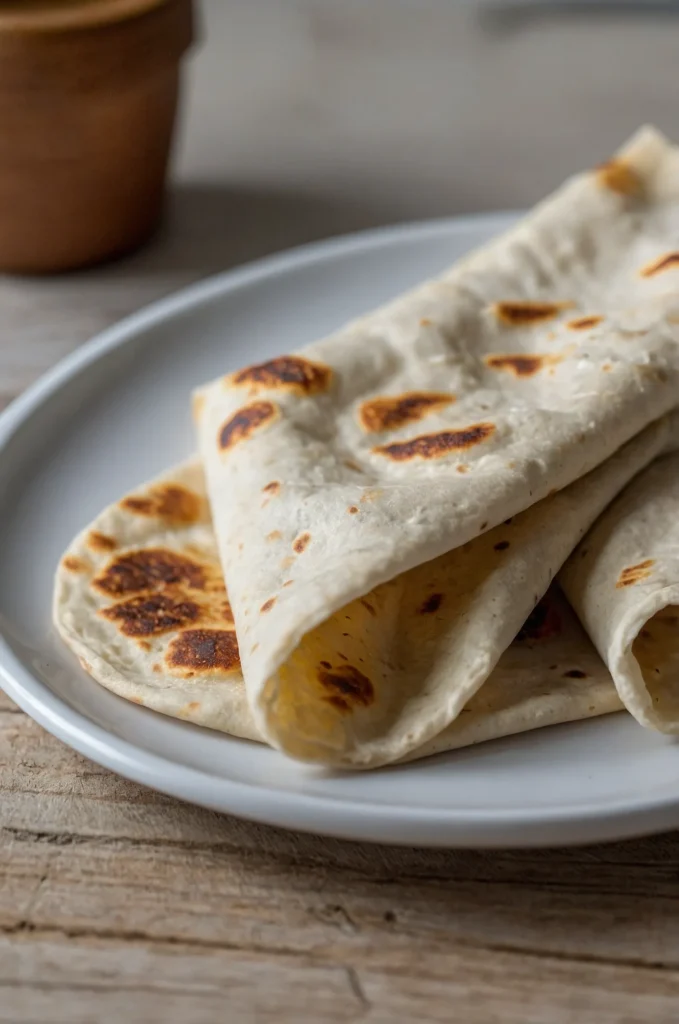
Bagels
Dense, chewy rings that often use mozzarella cheese in the “fathead dough” method for structure and stretch.
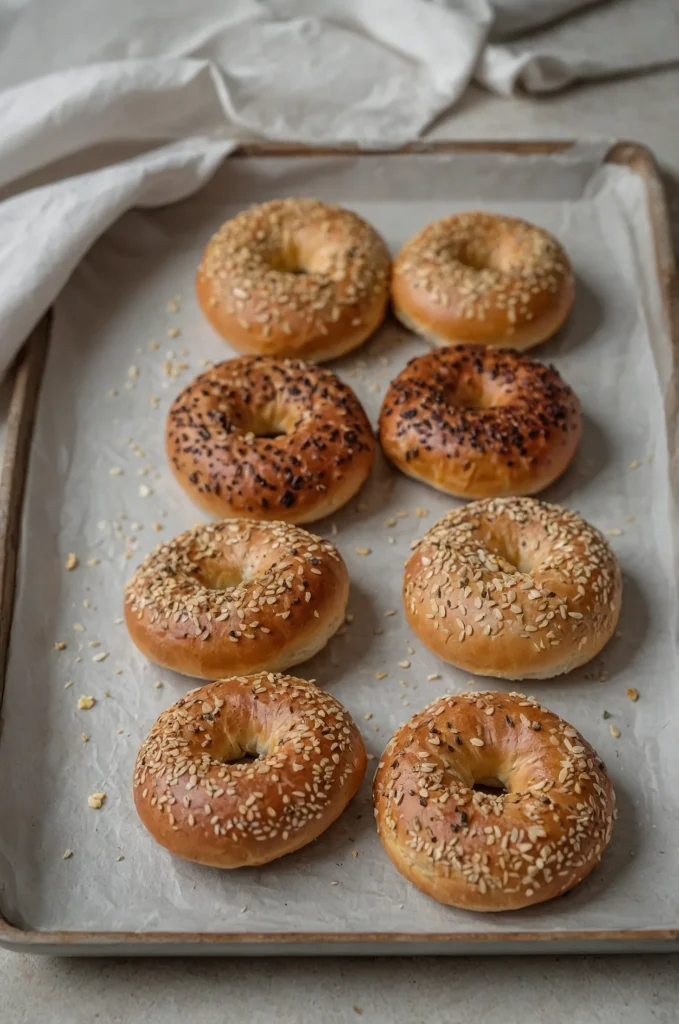
Quick Breads
Sweet or savory variations like banana bread or zucchini bread, adapted to be low carb with alternative flours and sweeteners.
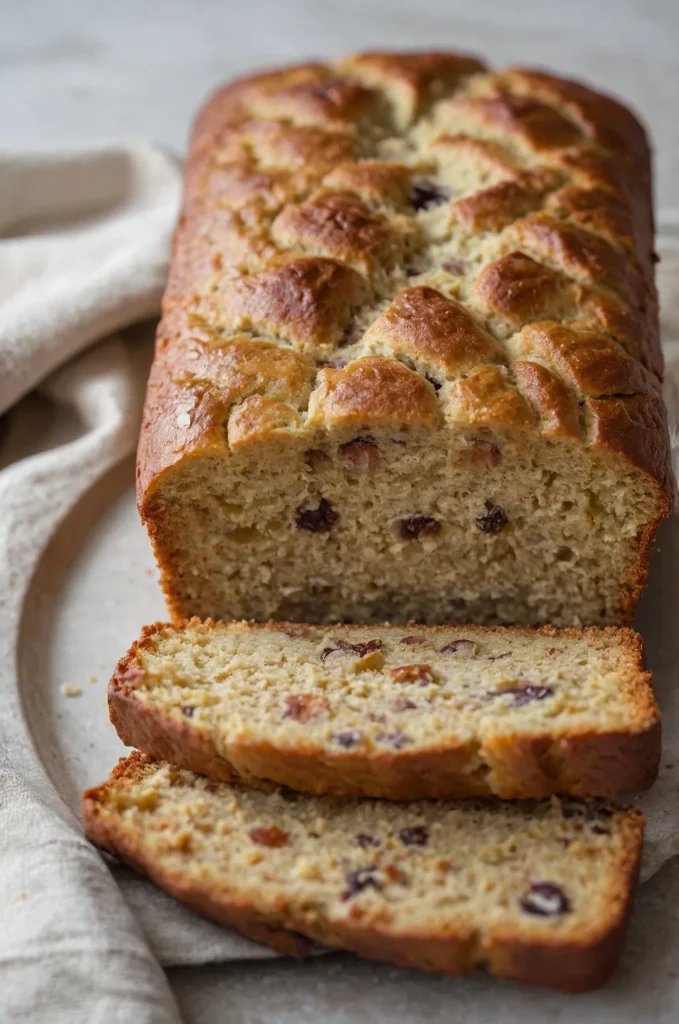
Focaccia and Artisan Breads
Thicker, rustic breads are often flavored with herbs and topped with olive oil, seeds, or other low-carb toppings.
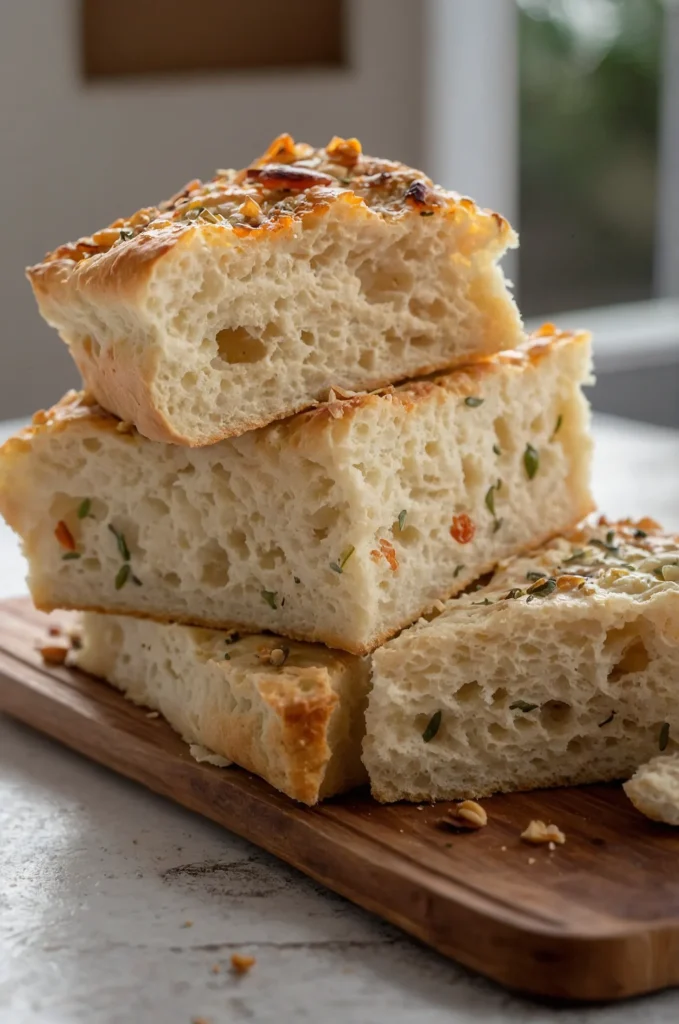
Tips for Successful Low Carb Baking
Mastering low-carb bread baking requires understanding some key principles that differ from traditional bread-making:
Precise Measurements Matter
Low-carb flours behave very differently from wheat flour, and small variations in measurement can dramatically affect results. Invest in a good kitchen scale and measure by weight when possible.
Temperature Control
Room temperature ingredients typically blend better in low-carb recipes. Cold eggs or dairy can cause coconut oil or butter to solidify prematurely, creating texture problems.
Proper Leavening Techniques
Without gluten to trap air bubbles, low-carb breads need proper leavening. Use fresh baking powder and baking soda, and consider adding a touch of apple cider vinegar or lemon juice to activate the baking soda fully.
Patience with Psyllium
When using psyllium husk, allow the dough to rest before baking. This gives the psyllium time to absorb moisture and develop structure.
Discover more breads Recipes
Embrace Eggs
Eggs provide structure, binding, and moisture in low carb breads. While it’s possible to make egg-free versions, most successful low carb breads include eggs.
Cooling Time
Low carb breads continue to set as they cool. Resist the temptation to cut into them immediately after baking—allow at least 20-30 minutes of cooling time for the best texture.
Experiment with Add-ins
Seeds like sunflower, pumpkin, or chia can add texture, nutrition, and visual appeal to low carb breads. They also help break up the sometimes dense texture of low carb breads.
Troubleshooting Common Problems
Even experienced bakers encounter challenges when making low carb bread. Here are solutions to common issues:
Dense or Heavy Texture
Possible Causes:
- Insufficient leavening
- Overmixing
- Too much psyllium or flax
Solutions:
- Add an extra 1/4 teaspoon of baking powder
- Mix just until ingredients are combined
- Reduce binding ingredients and increase protein (like egg whites)
- Create a lighter structure by whipping egg whites separately and folding them in
Eggy Taste
Possible Causes:
- Too many whole eggs
- Insufficient flavoring
Solutions:
- Replace some whole eggs with egg whites only
- Add flavor enhancers like herbs, spices, or extracts
- Include umami ingredients like Parmesan cheese or nutritional yeast
Crumbly Texture
Possible Causes:
- Insufficient binding agents
- Too dry a mixture
Solutions:
- Add xanthan gum (1/4-1/2 teaspoon per cup of flour)
- Include psyllium husk or ground flaxseed
- Ensure adequate fat content in the recipe
Gummy Interior
Possible Causes:
- Too much psyllium or flaxseed
- Underbaking
- Too much moisture
Solutions:
- Reduce psyllium/flaxseed quantities
- Extend baking time and use a toothpick to test doneness
- If using vegetables like zucchini, squeeze out excess moisture
- Allow bread to cool completely before slicing
Bread Falls After Baking
Possible Causes:
- Opening the oven door too early
- Overbeating the mixture
- Too much leavening (causing rapid rise and collapse)
Solutions:
- Keep the oven door closed for the first 75% of baking time
- Mix just until combined
- Reduce leavening agents slightly
Storing Low Carb Bread
Due to their different composition, low carb breads require special storage considerations:
Room Temperature Storage
Low carb breads generally don’t last as long at room temperature as traditional breads. Store in an airtight container for 1-2 days maximum.
Refrigeration
Most low carb breads keep best in the refrigerator, where they’ll stay fresh for 5-7 days. Wrap tightly in parchment paper or place in an airtight container.
Freezing
For longer storage, freezing is ideal:
- Slice bread before freezing for easy portioning
- Place parchment paper between slices to prevent sticking
- Wrap tightly in plastic wrap and then aluminum foil or a freezer bag
- Label with the date (will keep for up to 3 months)
- Thaw individual slices by toasting or microwaving briefly
Reviving Stale Bread
Low carb bread can be revived by:
- Toasting slices directly from frozen or refrigerated
- Warming in the oven at 300°F for 5-10 minutes
- Adding a light spritz of water before reheating to restore moisture
Serving Suggestions
Make the most of your low carb bread with these serving ideas:
Breakfast Options
- Avocado toast with everything bagel seasoning
- French toast made with low carb bread, eggs, cinnamon, and sugar-free syrup
- Breakfast sandwiches with eggs, cheese, and breakfast meat
Lunch Ideas
- Classic BLT with extra bacon
- Grilled cheese using sharp cheddar (stronger flavor means you can use less)
- Tuna salad on toasted low carb bread
- Turkey club sandwich with avocado instead of the traditional third slice of bread
Dinner Accompaniments
- Garlic bread made by toasting low carb bread with butter, garlic, and parsley
- Dinner rolls served with herb-infused olive oil for dipping
- Croutons for salads (cube bread, toss with olive oil and seasonings, and bake until crisp)
Snack Inspirations
- Cinnamon toast with butter and sugar-free sweetener
- Mini pizzas using bread slices as the base
- Bruschetta with diced tomatoes, basil, and olive oil
The Best Low Carb Bread Recipe
Now that we’ve covered the theory, let’s put it into practice with this foolproof low carb bread recipe:
Classic Almond Flour Sandwich Bread
Ingredients:
- 2¼ cups blanched almond flour (225g)
- 1/4 cup ground flaxseed (25g)
- 3 tablespoons psyllium husk (not powder) (15g)
- 1 tablespoon baking powder
- 1/2 teaspoon xanthan gum
- 1/2 teaspoon sea salt
- 4 large eggs, separated
- 1/4 cup butter, melted and cooled (57g)
- 3/4 cup warm water
- 1 tablespoon apple cider vinegar
- Optional: 1 tablespoon sesame or poppy seeds for topping
Instructions:
- Preheat your oven to 350°F (175°C). Line a 9×5 inch loaf pan with parchment paper, leaving overhang on the sides for easy removal.
- In a large bowl, whisk together the almond flour, ground flaxseed, psyllium husk, baking powder, xanthan gum, and salt until well combined.
- Separate the eggs, placing the whites in a clean, dry bowl. Set aside.
- In another bowl, whisk the egg yolks, melted butter, warm water, and apple cider vinegar until smooth.
- Pour the wet mixture into the dry ingredients and stir until well combined. The mixture will begin to thicken as the psyllium and flax absorb moisture.
- Beat the egg whites with an electric mixer until stiff peaks form, about 2-3 minutes.
- Gently fold the beaten egg whites into the batter in thirds, being careful not to deflate them too much. This adds lightness to the bread.
- Transfer the batter to the prepared loaf pan and smooth the top with a spatula. Sprinkle with seeds if using.
- Bake for 50-60 minutes, until the top is golden brown and a toothpick inserted into the center comes out clean. If the top browns too quickly, tent with aluminum foil.
- Allow the bread to cool in the pan for 10 minutes, then use the parchment paper to lift it out onto a cooling rack. Let it cool completely before slicing, at least 2 hours for the best texture.
Discover more breads Recipes
Nutritional Information (per slice, based on 16 slices):
- Calories: 147
- Fat: 12.8g
- Protein: 5.6g
- Total Carbs: 5.2g
- Fiber: 3.1g
- Net Carbs: 2.1g
This easy low carb bread recipe produces a loaf with excellent structure and minimal carbs, perfect for sandwiches or toast.
Easy Low Carb Bread Variations
Once you’ve mastered the basic recipe, try these variations:
Herb and Garlic Bread
Add 2 teaspoons of garlic powder and 1 tablespoon each of dried rosemary and thyme to the dry ingredients.
Cinnamon Swirl Bread
Mix 2 tablespoons of cinnamon with 1/4 cup of erythritol or monk fruit sweetener. Spread half the batter in the pan, sprinkle with half the cinnamon mixture, add remaining batter, and top with remaining cinnamon mixture. Swirl with a knife before baking.
Cheesy Bread
Add 1 cup of shredded cheddar or Parmesan cheese and 1 teaspoon of Italian seasoning to the batter before folding in the egg whites.
Nutty Bread
Add 1/2 cup of chopped walnuts or pecans to the batter for added texture and nutrients.
Conclusion
Low carb bread opens up a world of possibilities for those following carbohydrate-restricted diets. By understanding the science behind low carb baking, choosing the right ingredients, and mastering a few key techniques, you can enjoy delicious bread without compromising your dietary goals.
Whether you’re managing diabetes, following a ketogenic diet, or simply looking to reduce refined carbohydrates in your diet, low carb bread can be a game-changer. The best low carb bread recipes rival their traditional counterparts in taste and texture while offering superior nutritional profiles.
Remember that success in low carb baking comes with practice. Don’t be discouraged if your first few attempts aren’t perfect—each bake is an opportunity to refine your technique and discover what works best for your taste preferences and dietary needs.
Frequently Asked Questions
How many carbs are in low carb bread?
The carb content varies by recipe, but most homemade low carb breads contain 1-5g net carbs per slice, compared to 15-20g in regular bread.
Is low carb bread keto-friendly?
Yes, most low carb bread recipes are suitable for ketogenic diets when made with appropriate ingredients like almond flour, coconut flour, and minimal or no sweeteners.
Can I make low carb bread without eggs?
While challenging, it is possible. Commercial egg replacers usually contain starches, so better options include additional psyllium husk, flaxseed mixed with water, or chia seeds soaked in water.
Why does my low carb bread taste eggy?
This is a common issue due to the higher number of eggs needed for structure. Try using fewer whole eggs and more egg whites, or add stronger flavors like herbs, cheese, or natural extracts to mask the egg taste.
Is store-bought low carb bread as good as homemade?
Commercial low carb breads have improved dramatically, but many contain additives, preservatives, and sometimes hidden carbs. Homemade versions allow complete control over ingredients and are typically fresher and more nutritious.
How can I make my low carb bread rise better?
Properly whipped egg whites folded into the batter, adequate leavening agents, and proper oven temperature all contribute to better rise. For yeast breads, adding vital wheat gluten can help (if you’re not gluten-free).
Does low carb bread taste like regular bread?
The taste and texture differ somewhat from wheat bread, but modern recipes come remarkably close. Expectations are key—appreciate low carb bread for its unique qualities rather than expecting an exact duplicate of high-carb bread.
Can I use a bread machine for low carb bread?
Yes, but with modifications. Most bread machines have a “quick bread” or “cake” setting that works well. The standard yeast bread cycles usually aren’t appropriate since low carb doughs behave differently.
How do I make my low carb bread less dense?
Whipping egg whites separately and gently folding them in adds air. Additionally, using a combination of flours rather than just one type can improve texture.
Is low carb bread suitable for diabetics?
Generally yes, as it causes significantly less blood sugar impact than regular bread. However, individual responses vary, so monitoring blood glucose levels when introducing any new food is recommended.
Can children eat low carb bread?
Yes, low carb breads made with nutritious ingredients like almond flour and eggs are suitable for children unless they have specific allergies to the ingredients. They provide more protein and fewer empty carbs than conventional bread.

